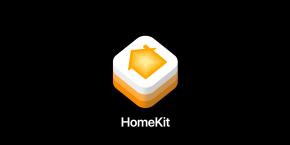
HomeKit Weekly is a new series focused on smart home accessories, automation tips and tricks, and everything to do with Apple’s smart home framework.
As a HomeKit enthusiast, I find myself playing around with a lot of different automations. Some stick because they’re actually useful while others are just neat proofs of concept that prove less practical. There is one set of automations that I absolutely love and recommend every HomeKit user copy: automating outside lights on and off based on time and sunset.
The best automations are for routines that you already have without smart accessories. For example, I open the curtains and raise the blinds every morning and close them back every evening, so investing in smart shades that can automatically open and close would prove useful — I just haven’t made the plunge yet given the cost of smart shades today.
Automating outside lights on and off is useful for the same reason — it’s something I’m going to do routinely anyway — and it’s a lot more affordable than smart shades. Any HomeKit-compatible smart lights will work, but be careful with outdoor bulb placement.
For my outdoor lighting, I use Philips Hue bulbs that aren’t specifically rated for outdoor use but I’ve had no issues over several years. Philips is currently working on a line of outdoor lighting products, and I’m using a combination of E12 candle bulbs and BR30 flood lights. You’ll also need a HomeKit-compatible Hue bridge to make these lights talk to Apple’s Home app.

As with any automation, you’ll need a HomeKit hub in the form of a HomePod, Apple TV 4 or Apple TV 4K, or always-on iPad. HomeKit also uses this hub to determine local sunrise and sunset time based on data from The Weather Channel as you can see in the Weather app on iPhone.
This is useful for two reasons: the automation continues to work for family if the main user is across the country in another time zone, and relying on sunset and sunrise instead of a set time makes the time of day dynamic since the actual time varies throughout the year.

Once your HomeKit lights are in place, creating the set of automations is really easy. Start from the Home app on iPhone or iPad, then go to the Automation tab and select + to create a new automation. Next tap ‘A Time of Day Occurs’ to specify a Time Automation, then select what time you want the action to occur. Select ‘Sunset’ for turning outdoor lights on (you can optionally select up to 1 hour before or after in 15 minute intervals), then choose each day of the week to repeat and select next.

From here you select which accessories you want to be controlled — whichever outdoor lights you have with HomeKit — then select next, and finally specify which action will occur with these accessories at sunset (i.e. turn on or set to a specific brightness). The last step is to confirm the automation you created is correct, then select done to confirm.

Repeat this process but select a different time to automate outdoor lights turning back off. For me I choose to have outdoor lights turn on at sunset, but off at 10 pm. This ensures outdoor lighting will be provided during hours that I’m awake, but I don’t necessarily want to light the neighborhood while I’m asleep.
I have a third automation that turns off outdoor lights at sunrise just in case any lights were turned on after 10 pm manually and not turned back off. Another option is to add a motion sensor that turns on outdoor lights after hours when motion is detected, but only for a short period of time. I haven’t taken this step yet, but it’s on my to-do list.
For now, automating outdoor lighting on and off based on sunset/sunrise and time is by far my favorite way to put HomeKit to work for me. I get the urge to set up HomeKit lighting for my neighbors anytime I see a porch light left on during daylight hours!
Stay tuned for the next installment of HomeKit Weekly next Wednesday, and catch up on the first three entries below:
- HomeKit Weekly: Getting started with Apple’s Home app on iPhone, iPad, and Apple Watch
- HomeKit Weekly: Turning your old garage door into a Siri-controlled entrance
- HomeKit Weekly: Using Automation to put sensors to work
FTC: We use income earning auto affiliate links. More.


Comments